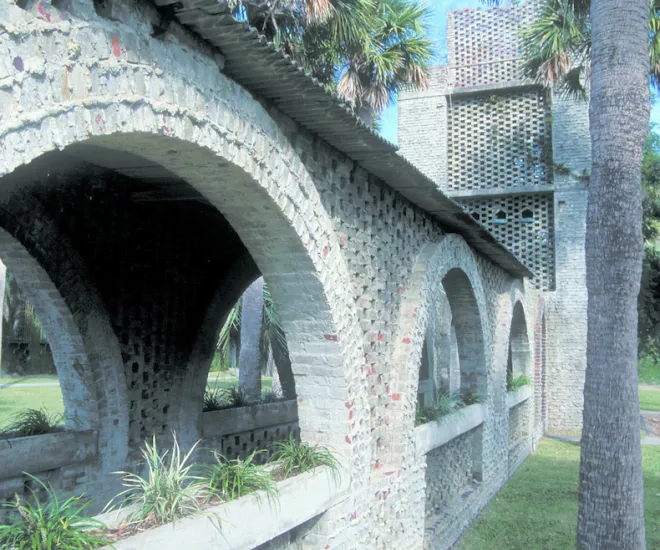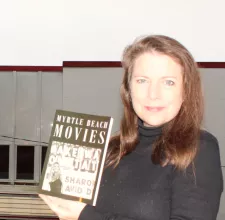Atalaya Castle and Murrells Inlet During WWII

Atalaya Castle and Murrells Inlet During WWII
December 7th, 1941, marked an infamous day in our nation’s history that played out in the American waters of the Pacific when Pearl Harbor was attacked. What no one could imagine is what a personal impact that day would eventually have on the local waters of Murrells Inlet, south of Myrtle Beach, as the US not only entered WWII, but in a sense, brought it to our shores.
While just over 2400 Americans lost their lives that day in Hawaii, more than twice as many perished in American waters of the Atlantic up and down the Eastern Seaboard in the first six months of 1942. It was called the U-Boat Menace. Most people didn’t realize at the time that Germany had sent U-boats to our coast to take out our Navy vessels if they could, but primarily to cut off our supply chain to the Allied Forces. For years, we had been sending food, medicine, fuel and the like to Europe. Now that the US had entered the war, we were fair game.
You could stand on the beach along the Grand Strand and occasionally see an orange glow in the distance. But from the shore, you couldn’t tell if a German U-boat had gotten one of our ships or if we had attacked them. You had to guess what happened because you couldn’t read about these incidents in the papers because our government, not wanting to instill widespread panic, prohibited the media from reporting the attacks. However, our government did implement rules of safety for residents to follow, especially if you were near the beach.
We’d have to have blackout curtains in our beach houses so that no lights could be seen. The tops of our vehicles’ headlights had to be painted black, so there was just enough light to see without being seen from a distance. If you were driving toward the ocean, you’d have to turn your lights off entirely. Our seaside towns would often hold blackout drills.
Groups called Coastal Observers were organized who walked the beaches looking for any indication that the enemy had come ashore. Other volunteers were assigned in shifts to man watchtowers or the rooftops of whatever the tallest buildings were to look for U-boats at sea and enemy planes in the sky. Local high school students would spend their study hall periods in a tower on the beach as lookouts. You’d have little old ladies sitting on top of flat-roofed commercial buildings with binoculars in one hand and a chart in the other of what planes they should be looking for. Everyone did their part.
A most significant contribution was made by the founders of Brookgreen Gardens, philanthropist, Archer Milton Huntington, and his wife, the world-renowned sculptor, Anna Hyatt Huntington. They allowed the US Army Air Corps to use their winter residence, Atalaya, from 1943 until it was returned to them after the war. The 455th Bombardment Squadron occupied the property with nearly 500 men who patrolled the beach and used the grounds for training. A house that had been previously moved from one of the four former plantations, Laurel Hill, that make up what is now Brookgreen Gardens, that is just across Highway 17 from Atalaya, served as a mess hall and provided lodging for some of the men, but is no longer in existence.

Its original purpose for being moved there in the 1930s was to house the Huntington’s dogs and the dogs’ handlers. It was also where the dogs’ meals and any veterinary applications were prepared. It was positioned behind where visitors today can see the former dog pen. Anna was one of the first breeders of Scottish Deerhounds in America and was quite accomplished at it.
Atalaya itself, which means watchtower in Spanish, was more of a fortress than a traditional home. That was perfect for the military function it fulfilled during the war years, but not its initial purpose. Archer Huntington didn’t foresee in the early 1930s that a bastion on the beach would be about the most practical thing he could have built to benefit the Murrells Inlet community in the following decade. His impetus was his love for Hispanic culture. He was enamored by its language, poetry, history and architecture. That’s why a home that looks a lot like the Moorish castles that you would find along the coast of Spain is featured in what is now known as Huntington Beach State Park.
The Huntingtons rode out the war on their farm in Redding, Connecticut, that is now the Collis P. Huntington State Park (their house is no longer there). Anna especially was hands-on growing a victory garden and raising cattle, chickens and pigs in order to support their household, her pedigree dogs, and the families who worked on the farm. For variety, she would have ducks and geese sent up from Brookgreen Gardens. She would then give one to each family on the farm at Thanksgiving and Christmas.
Another significant relic from WWII that is hidden in plain sight in the middle of Murrells Inlet can be seen from the MarshWalk and accessed from the corner of the parking lot of the Crazy Sister Marina. What is now a fishing pier is sometimes referred to by Murrells Inlet locals as the Government Dock or by long-time residents as the Crash Dock. It was put there during the war as part of the Army Air Corps’ Crash Boat Station from which boats would be launched to rescue the pilots and crews of military aircraft if something went wrong during their training missions offshore.
From 1941 to 1947, what is now the Market Common District beside the Myrtle Beach International Airport was an Army Air Corps air field. In March of 1942, the Myrtle Beach Bombing and Gunnery Range opened there. Its practice area encompassed what is currently the Carolina Forest community west of Myrtle Beach and Murrells Inlet. The latter provided the closest access from the air field to the ocean via natural inlets.
Where popular seafood restaurants along the Marshwalk are now, there were a few military structures to accommodate the rescue crew and their work. One New Jersey native who was stationed there, Monty Watson, was an amateur photographer and captured what Murrells Inlet looked like at that time. Some of his pictures can be seen online as part of the South Carolina Digital Library.
While most Americans across the country were of course affected by the war in a myriad of ways, they weren’t necessarily subjected to the dangers of war. Murrells Inlet residents sometimes were. The U-Boat Menace aside, there was occasionally collateral damage from those training missions. Sunnyside, the lovely home on the marsh that is now a popular event space for weddings, had a shell go through one of the bedrooms and come out on the front porch. Fortunately, no one was living there at the time, but the owner went to Shaw Air Field near Sumter, SC, where the offending planes had originated to file a complaint. She was informed that if they received any more complaints from Murrells Inlet that they would simply shut down the village and commandeer it for the duration that they needed it.
So it wasn’t by choice that residents accepted the military presence, but they did make the best of it as they could. Some of the locals became quite close to the men stationed there. It was considered light duty for these men who had been fighting overseas and the work helped them decompress and acclimate to being back stateside. Multiple families opened their homes to them, almost like unofficial service clubs, where they could hang out and play horseshoes with the local children. In return they would take the kids out on some of the boats. One lady recalled from her childhood that when her family came downstairs one Christmas morning, the men had a roaring fire built in the fireplace for them. In fact, her big sister married one of those crew members. Theirs was one of eight similar marriages that resulted when WWII came to Murrells Inlet.
